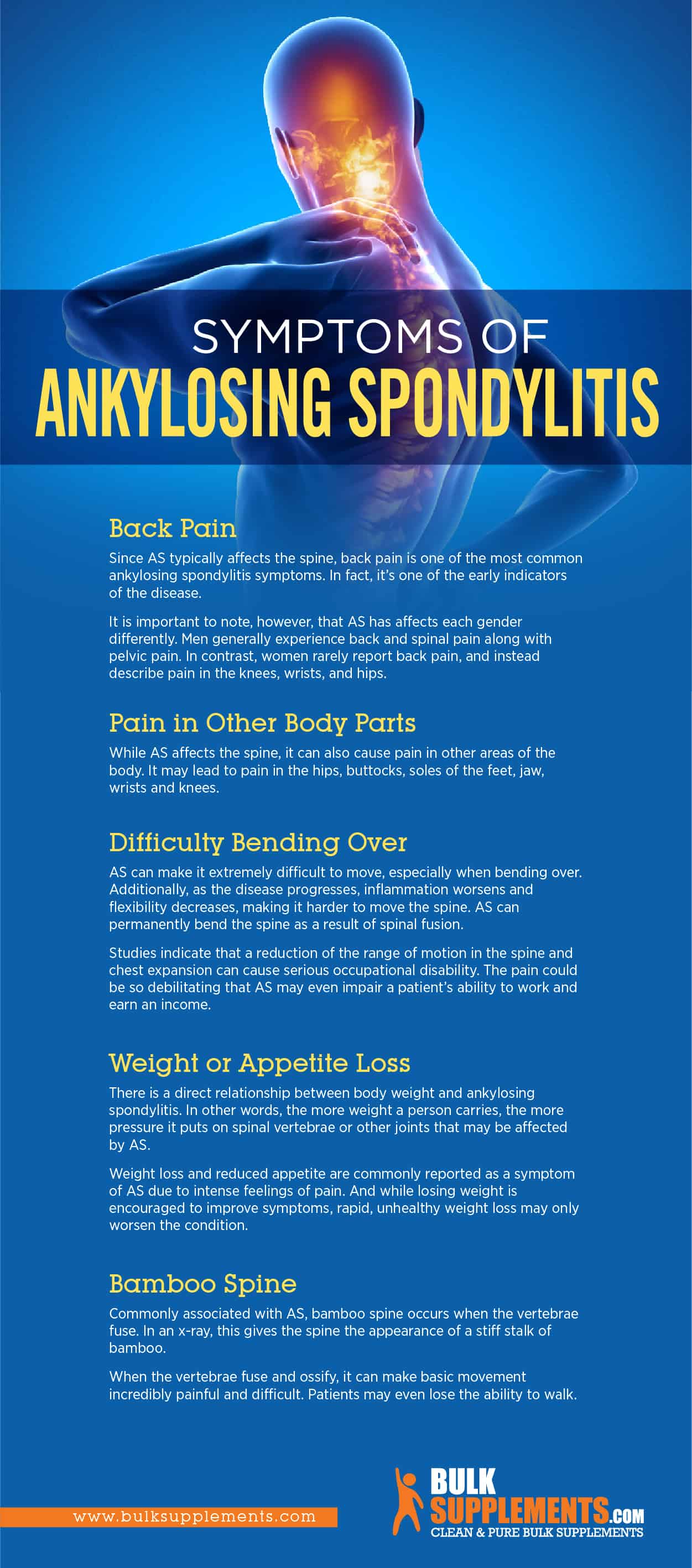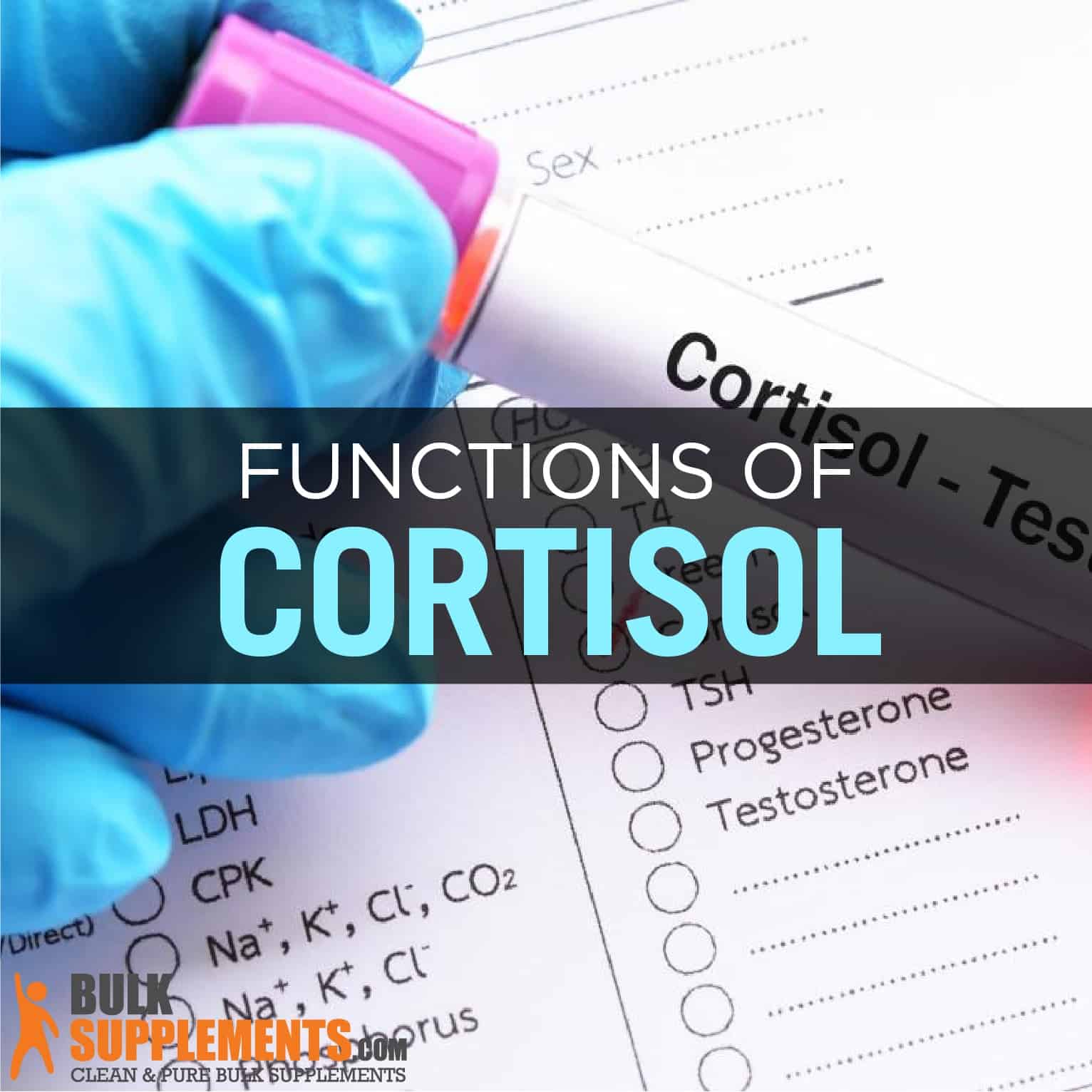Ankylosing Spondylitis Symptoms, Causes and Treatments
by James Denlinger Digital Marketing StrategistWhat is Ankylosing Spondylitis?
When it comes to back pain, ankylosing apondylitis is in a category all its own. It’s in the spondyloarthropathy family of inflammatory rheumatic diseases that cause arthritis. Ankylosing Spondylitis is also referred to as AS, Bechterew’s disease, Marie Strumpell disease, and rheumatoid spondylitis.
AS is more than just back pain; it’s a type of inflammatory arthritis disease. Over time, this disease causes some vertebrae in the spine to fuse. This fusing is extremely painful, and makes the spine less flexible. People with AS generally end up with a hunched-over posture. If the ribs are affected, AS can even cause difficulty breathing.
AS affects men and women differently. Men are two to three times more likely to develop AS than women. Symptoms typically begin to occur between a patient’s teens and 30s, and persist throughout adulthood.
Research suggests that AS is usually genetic, meaning you’re more likely to develop it if a relative has it. While there is no cure for AS, scientists are researching potential treatments, and remedies are available to ease the symptoms.
What symptoms should you look for if you suspect you have AS?
Symptoms of Ankylosing Spondylitis
Back Pain
Since AS typically affects the spine, back pain is one of the most common ankylosing spondylitis symptoms. In fact, it’s one of the early indicators of the disease.
It is important to note, however, that AS affects each gender differently. Men generally experience back and spinal pain along with pelvic pain. In contrast, women rarely report back pain, and instead describe pain in the knees, wrists, and hips.
Pain in Other Body Parts
While AS affects the spine, it can also cause pain in other areas of the body. It may lead to pain in the hips, buttocks, soles of the feet, jaw, wrists and knees.
Difficulty Bending Over
AS can make it extremely difficult to move, especially when bending over. Additionally, as the disease progresses, inflammation worsens and flexibility decreases, making it harder to move the spine. AS can permanently bend the spine as a result of spinal fusion.
Studies indicate that a reduction of the range of motion in the spine and chest expansion can cause serious occupational disability. The pain could be so debilitating that AS may even impair a patient’s ability to work and earn an income.
Weight or Appetite Loss
There is a direct relationship between body weight and ankylosing spondylitis. In other words, the more weight a person carries, the more pressure it puts on spinal vertebrae or other joints that may be affected by AS.
Weight loss and reduced appetite are commonly reported as a symptom of AS due to intense feelings of pain. And while losing weight is encouraged to improve symptoms, rapid, unhealthy weight loss may only worsen the condition.
Bamboo Spine
Commonly associated with AS, bamboo spine occurs when the vertebrae fuse. In an x-ray, this gives the spine the appearance of a stiff stalk of bamboo.
When the vertebrae fuse and ossify, it can make basic movement incredibly painful and difficult. Patients may even lose the ability to walk.
 PIN IT
PIN ITCauses of Ankylosing Spondylitis
Unfortunately, ankylosing spondylitis has no known specific causes, although research continues to determine what sparks the disease.
Genetics do seem to be involved, specifically with the HLA-B27 gene, but not everyone with this gene is affected.
Risk factors include:
- Gender– AS affects men more often than women.
- Age– AS typically begins in late adolescence or early adulthood.
- Heredity– Those with a family history of AS are more likely to develop it, although a genetic history of the disease does not guarantee that someone will get it.
Rare Complications of Ankylosing Spondylitis
In most cases, AS symptoms occur in a predictable pattern. But in some rare cases, the following complications may occur:
- Cauda Equina Syndrome- This extremely rare condition causes bone growth, which leads to pressure and swelling at the end of the spinal cord. Symptoms of cauda equina include pain and numbness, tingling in the legs, incontinence, and even paralysis if untreated.
- Eye problems- If you have AS, your doctor will most likely encourage you to make regular appointments with an eye doctor. This is because in rare cases, inflammation from AS can lead to swelling, puffiness, redness, or pain in the eye. Even rarer cases could cause blurred vision, sensitivity to light, and severe pain.
- Gastrointestinal disorders- Although uncommon, inflammation from the spine in AS can spread to the intestinal tract. The resulting inflammation in the intestinal tract and bowels can cause issues such as stomach pain, ulcers, diarrhea, and digestion problems. Other severe cases have reported Cron’s disease or ulcerative colitis.
Ankylosing Spondylitis Remedies
Supplements for Bone Health
Calcium is a bone’s best friend. And since AS affects the vertebrae of the spinal cord, calcium could be an AS patient’s best friend, as well.
Calcium promotes strong bones, including the bones of the spine. The daily recommended intake of calcium is 1200 milligrams for women over 50 or men over 70. If you’re younger, take 1000 milligrams daily.
Calcium supplement dosage varies depending on the concentration in each supplement, so always adhere to the dose recommended on the label.
When you start taking calcium, don’t forget vitamin D. Studies show it helps your body absorb calcium more effectively and maintains adequate blood calcium levels. Since most people are vitamin D deficient, doctors recommend 50mg a day.Talk to your doctor to see what dosage works best for you.
Other Remedies
Treatments for AS can be broken down into four categories: medications, therapy, surgery, and improving your lifestyle. Although distinct from each other, doctors typically recommend a combination of these treatments:
- Medications typically start with an NSAID (nonsteroidal anti-inflammatory) such as naproxen. This medication helps relieve pain, inflammation, and stiffness. However, prolonged use of NSAIDs could cause symptoms like gastrointestinal bleeding. If this medication doesn’t do the trick, doctors may also recommend a biologic medication, such as TNF, which blocks the cell protein that causes inflammation in the body.
- Physical therapy is one of the most beneficial remedies for AS. It helps patients improve strength and flexibility, which improves quality of life and could even reduce pain. Physical therapy for ankylosing spondylitis usually includes range-of-motion and stretching exercises aimed at improving posture and flexibility in the joints.
- Surgery is rarely performed on those with AS, since it does little to reduce symptoms. However, if you have severe, debilitating pain with AS in certain areas of the body like the hips, your doctor may recommend hip replacement surgery to lessen the pain.
- Improving your lifestyle is can significantly improve AS symptoms. By avoiding smoking, staying active, applying heat and cold to painful areas, and practicing good posture, you may be able to improve your flexibility and reduce pain.
The Bottom Line
Ankylosing spondylitis is a chronic inflammatory arthritic disease that causes pain and swelling in the spine and other areas of the body. While there is currently no cure for AS, research continues to determine likely causes and the best courses of treatment.
If you have been diagnosed with AS, your doctor can help you determine which treatments will work best for you. Some treatments and remedies include physical therapy, bone-strengthening supplements, applying hot and cold compresses, and maintaining an active lifestyle. AS may not have a cure yet, but you can manage your symptoms with the help of a medical professional.
Sponsor Ads
Created on Apr 12th 2020 17:55. Viewed 181 times.




